
views
Pregnancy-Friendly Spooning
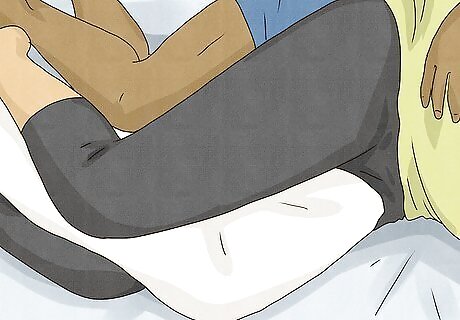
Use lots of pillows wherever you need support. For example, once you bend your knees at about a 45-degree angle to get into “spoon” position, place a pillow between them. You might also find it comfortable to nestle small pillows under your arm, your lower back, and/or your pregnant belly. Or, try some of the many pregnancy pillows on the market to see if they provide all-around comfort. Whenever you’re lying down during your pregnancy, rest your head on a comfy, supportive pillow—consider using a wedge pillow that elevates your upper body and reduces the likelihood of acid reflux (which is common during pregnancy). There’s no “magic” pillow type or pillow position that guarantees comfort here. Especially when you’re pregnant, comfort is a very personalized thing. So find what works for you and go with it!

Lie in bed on your left side if that works for you. It’s definitely okay to lie on your right side if that’s more comfortable—after all, cuddling should be comfy! That said, there are some added (temporary) benefits to lying on your left side: It reduces pressure on your vena cava, which carries blood back from your lower body to your heart. It increases blood and nutrient flow to the placenta and, in turn, your baby. It improves kidney function, which can help reduce lower-body swelling.
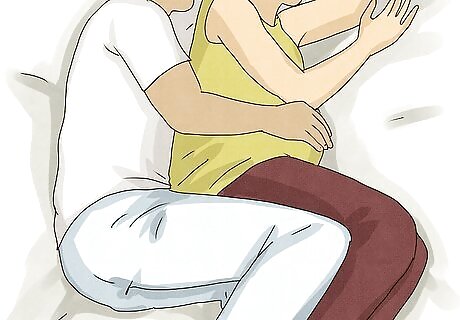
Have your partner nestle into the “big spoon” position. Other than having to navigate a few extra pillows, your partner can cuddle with you in the classic “spooning” setup. Now that you’re in place as the “little spoon,” they can snuggle up against your back in the “big spoon” position—which really just mirrors your bent-knee setup. You might enjoy it if your partner drapes their top arm over you and rests their hand on your belly. Don’t be shy about letting them know what you want or don’t want here!
Head-on-Lap Cuddling with Pillows

Have your partner sit with a supportive pillow on their lap. They can sit at one end of the couch so you’ll have room to stretch out. Instead of using a classic head-on-lap setup, pile one or more pillows on their lap to elevate, support, and cushion your head, neck, and upper back. A wedge pillow might work well here, but use any pillow or combination of pillows that’s comfy for you. Head-on-lap cuddling is great when you want to make lots of eye contact.
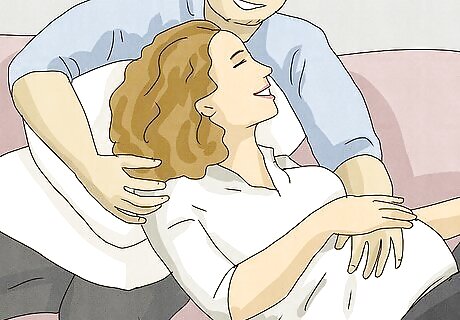
Lie down on your back with your upper body elevated. Sit on the couch, then turn your body and put your head on your partner’s pillow-cushioned lap. Adjust your upper body (and have them adjust the pillows) until you get the right mix of comfort and support. Propping your head up more than normal here reduces some of the pressure on your back and reduces the likelihood of experiencing an episode of acid reflux. And, as an added bonus, it gets you a little closer to your partner as they gaze lovingly into your eyes!
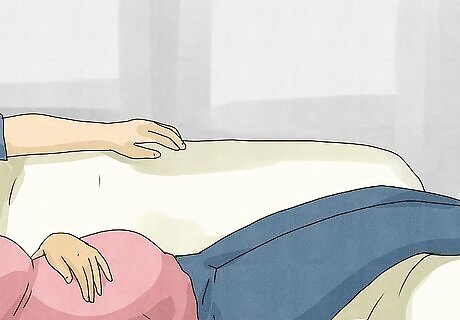
Stretch your legs out or place a pillow under your knees. It’s all about personal comfort here. Some pregnant women feel better with their legs stretched out on the couch, while others prefer bending their knees and having a pillow propped under them. When it comes to pillow placement during pregnancy, remember that the number-one rule is to put them where they provide you with the most comfort.
Getting Comfy for Cuddling
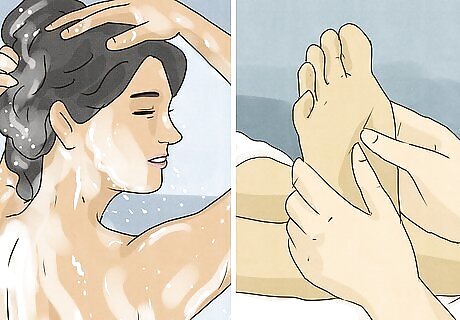
Do something relaxing like a bath or massage before cuddling. Yes, the cuddling itself should be relaxing, but even relaxing activities can start to feel uncomfortable quickly when you’re pregnant. By getting as relaxed as possible before your cuddling session, you may be able to stick with it longer before you have to switch positions or get up. For example, try taking a warm (not hot) bath beforehand, or have your partner massage your sore feet.
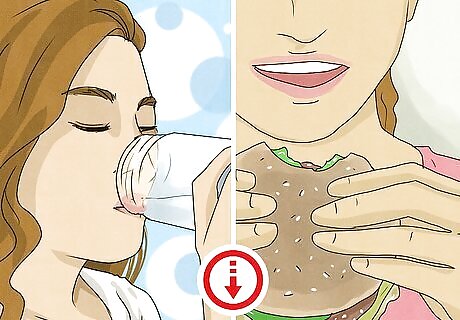
Don’t drink or eat too much right before cuddling. Being pregnant definitely means making more trips to the bathroom than you’re used to, which can really disrupt a nice cuddling session! While it’s important to hydrate while pregnant, try to reduce the strain on your bladder by not drinking something like a full glass of water shortly before cuddling. To reduce your chances of experiencing acid reflux (GERD) while lying down to cuddle, don’t eat right before your session either.
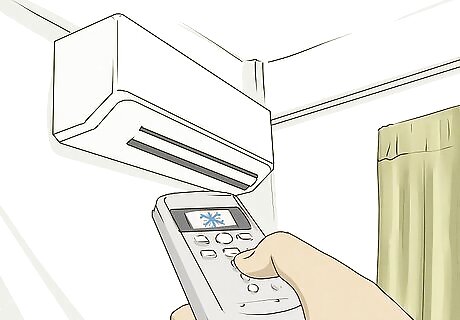
Adjust to being warmer than usual while cuddling. You already know that the baby growing inside you can act like a little heat pump, so don’t be surprised if cuddling up close to your partner leaves you feeling overheated. Plan for this by putting on lighter (or fewer) clothes, adjusting the room temperature, or opening a window. If your partner is chilly, they can accommodate you by putting on a sweater or blanket—after all, you’re the one who’s pregnant!
Benefits of Cuddling
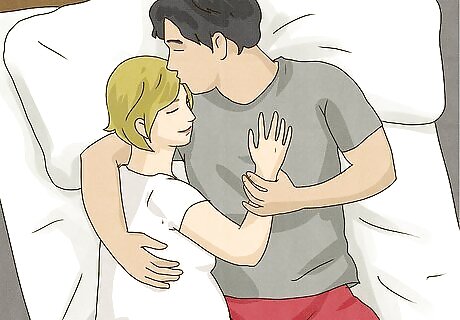
Cuddling can strengthen nurturing bonds in a time of change. Being pregnant alters your relationship with your partner in many ways, including intimacy and sexuality. While cuddling definitely has a sexual aspect, it has at least as strong of a “nurturant” impact. In other words, it enhances feelings of care, connection, and protection during a time when they are very much needed.

Cuddling can lead into sex or be an alternative during pregnancy. Unless your healthcare provider advises otherwise due to specific conditions or risks, it’s safe to continue having sex during your pregnancy. That said, sex might become less comfortable or desirable for one or both of you, in which case activities like cuddling can help to maintain intimacy. Just like you may have to adjust your normal cuddling positions and routines, making changes to your usual sex positions and routines may prove helpful during pregnancy.

Cuddling is good for your health in many ways, pregnant or not. In addition to cuddling’s benefits for your relationship with your partner, it offers health benefits as well. And, when you’re pregnant, your health and your baby’s health are intertwined, so take advantage of benefits like the following: Reduced stress, partly due to increased levels of oxytocin (the “love hormone”) and reduced levels of cortisol (the “stress hormone”). Reduced blood pressure, connected to the reduction in stress. Improved sleep, again due to lowered stress levels. Mild pain relief due to the release of oxytocin.




















Comments
0 comment